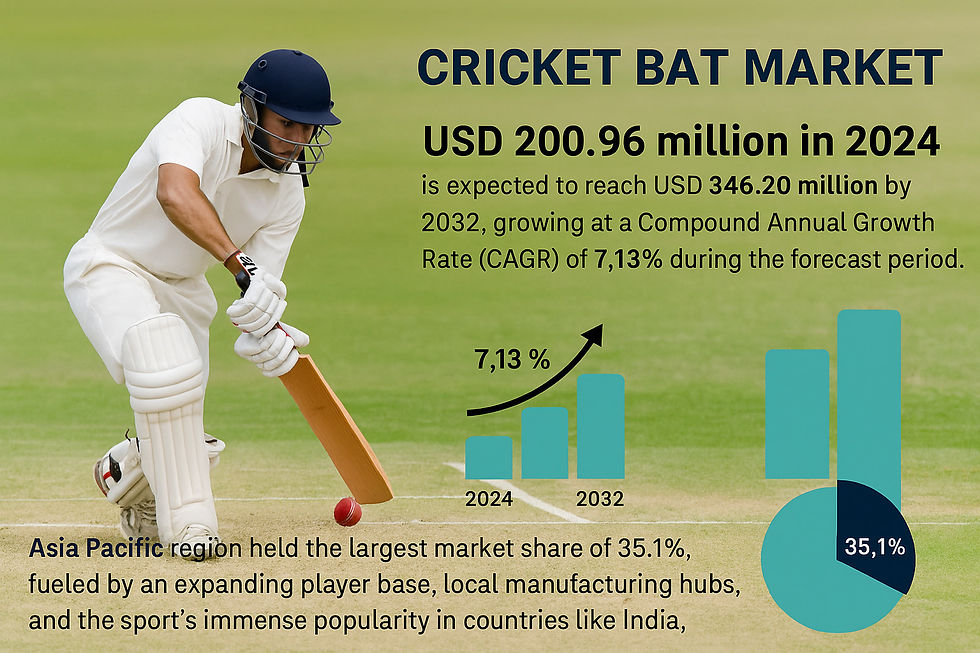Handloom Products Industry Overview: Opportunities, Challenges, and Forecast 2025–2032
- Reddy S
- Jul 4
- 3 min read
According to Fortune Business Insights, the global handloom products market share was valued at USD 8.32 billion in 2024 and is expected to rise to USD 8.95 billion in 2025, reaching USD 16.62 billion by 2032. This reflects a robust compound annual growth rate (CAGR) of 9.24% during the forecast period. In 2024, the Asia Pacific region led the market, accounting for a dominant 55.77% share.
Handloom products hold cultural significance in several regions globally, reflecting heritage and identity. These products include carpets, mats, rugs, handbags, and apparel. The rising consumer demand for sustainable, unique, and culturally significant products is expected to drive the handloom products market growth during the forecast period.

Request FREE Sample PDF Copy: https://www.fortunebusinessinsights.com/enquiry/request-sample-pdf/handloom-products-market-108597
List of Key Players Present in the Report:
Maheshwari Handloom Works (India)
GoCoop (India)
Chandan Rugs (India)
Sri LaxmiNarasimha Handloom Sarees (India)
Manisha Silk Weaves (India)
Medusa Exim (India)
Dhananjay Creations (India)
Shree Jee (India)
Global Floor Furnishers (India)
Dream Home Carpets Pvt. Ltd. (India)
Segments:
Increasing Sustainable Fashion to Augment Sarees Segment Growth
By type, the market is segmented into sarees, apparel & accessories, bedding & bath, carpets, mats, & rugs, and others. The sarees segment accounted for the majority of the market share in 2022. The growth is attributed to the rising sustainable fashion, creating a huge appetite for handcrafted and hand-loomed items.
Growing Popularity of Cotton to Drive Cotton Segment Growth
Based on material, the market is divided into cotton, silk, linen, and wool. The cotton segment accounted for the majority of handloom products market share due to the increasing popularity of cotton among people globally.
Geographically, the market is studied across North America, Europe, Asia Pacific, South America, and the Middle East & Africa.
Report Coverage-
The report offers:
Major growth drivers, restraining factors, opportunities, and potential challenges for the market.
Comprehensive insights into regional developments.
List of major industry players.
Key strategies adopted by the market players.
The latest industry developments include product launches, partnerships, mergers, and acquisitions.
Drivers & Restraints
Growing Shift toward Environment-Friendly Products to Boost Market Growth
The increasing shift toward environment-friendly products, changing consumer preferences, rising emphasis on conserving cultural art and heritage, and a renewed appreciation of traditional craftsmanship are expected to drive market growth. The handloom products are mainly produced using age-old methods, which align with their values. These fabrics are largely preferred by people looking to decrease fashion-related carbon footprint which is estimated to increase market share during the forecast period.
However, the difficulties faced by several handloom weavers in carrying out their livelihood due to the increasing competition may impede market growth.
Regional Insights
Asia Pacific Leads Due to Growing Integration of Modern Innovations with Age-Old Techniques
Asia Pacific is estimated to hold the largest handloom products market share during the forecast period. The increasing integration of modern innovations with age-old techniques is driving a rich tradition of textile production and craftsmanship in the region.
North America is estimated to witness moderate growth during the forecast period due to the rising interest of people in sustainable and locally-produced artisanal products.
To get to know more about Handloom Products Market: https://www.fortunebusinessinsights.com/handloom-products-market-108597
Competitive Landscape
Rising Key Players Focus on Partnerships to Augment Market Growth
The increasing focus of major market players on adopting collaborative and partnership strategies to strengthen their market position is estimated to drive market growth. For instance, in 2019, Tata Trusts and Microsoft India signed a MoU to revive the handloom clusters in the northeastern and eastern parts of India.
Key Industry Development
August 2023: In order to digitize the handloom and handicraft sector in North East India, Tide, UK's SME-focused business financial platform, entered into a MoU with North Eastern Handicrafts and Handlooms Development Corporation (NEHHDC). As part of the one-year-long partnership, the company is set to amplify scalability, financial inclusion, and market reach for the community of nearly 2.1 million handloom weavers and 3.5 handicraft artisans across 800 clusters in Northeast India.
August 2023: E-commerce platform Flipkart collaborated with the government of Gujarat on National Handloom Day through a MoU with the Commissioner of the Cottage and Rural Industries, the government of Gujarat, under the Flipkart Samarth program. This partnership aims to digitize local businesses, emphasizing the development of crafts in every district and making concerted efforts to revive struggling crafts within the state.







Comments